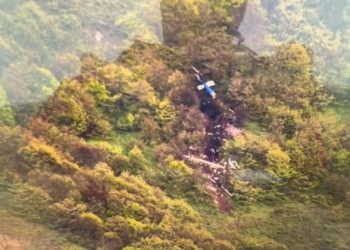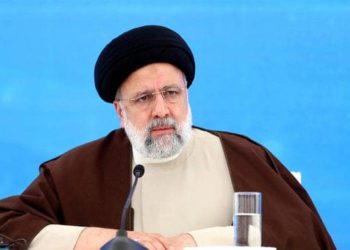The Vietnam War was by far the largest conflict in South East Asia since the end of the Second World War and was the first large scale, unconventional war to be fought in the 20th century. This was the first war where the front lines did not exist in the traditional sense, as the North Vietnamese Army and Vietcong attacked on multiple fronts on the ground. Usually many miles within what was then known as South Vietnam and far away from what was the established boarder which existed between north and south.
As the United States and its allies ( South Vietnam and Australia) found themselves employing new technologies and tactics to deal with the enemy on the ground, it was in the skies over South East Asia, that the Vietnam War saw some of its more legendary battles. There, American F-4 “Phantoms” and Vought F-8 “Crusaders”, the best fighter aircraft the United States had at their disposal at the time, faced off against Soviet supplied MiG-17s, MiG-19s and the legendary MiG-21. In a way, Vietnam saw the first wide spread use of new technologies such as Surface-to-Air Missiles, air launched radar guided and heating missiles, and even the first wide scale use of electronic warfare.
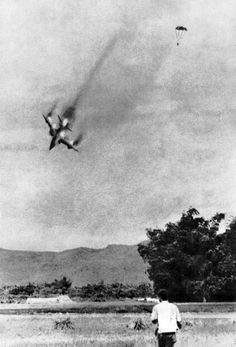
In the months leading up to Bolo, American bombers had fallen prey to North Vietnamese surface to air missiles and MiGs. Aircraft like the F-105 “Thunder Chief” suffered the most, as they were easy targets for Vietnamese MiGs and SAMs when loaded with heavy bombs. As they lost most of their speed and agility due to the added weight. In July f 1966, 43 aircraft were lost as a result and to make matters worse, the military was banned from launching strikes on enemy airfields as during this time, as the Soviets had personnel advisors stationed there. The last thing the Americans wanted was to give the Soviets an excuse to intervene if one of their own was killed in an air strike. As a result the only way to kill MiGs was when they were in the air.
A task which was easier said than done, as Vietnamese pilots adopted hit and run guerrilla tactics. Only coming up to engage the slower bombers, then flee before Phantoms came in to intercept. This took a toll on American pilots, some of which had begun to leave for high paying civilian jobs in the airline industry. But one senior commander by the name of Robin Olds saw what needed to be done and stayed on to help his pilots.
Robin Olds was one of the “old dogs” of the United States Air Force. A veteran of World War 2, Olds was a P-38 and P-51 pilot, a double ace and an advocate for more aggressive dogfight training for pilots. Olds had a bit of a rock star charisma about him which usually rubbed some of his senior commanders the wrong way, but he was the man the Air Force needed and he was not afraid to ruffle some feathers if it meant getting the results they wanted.
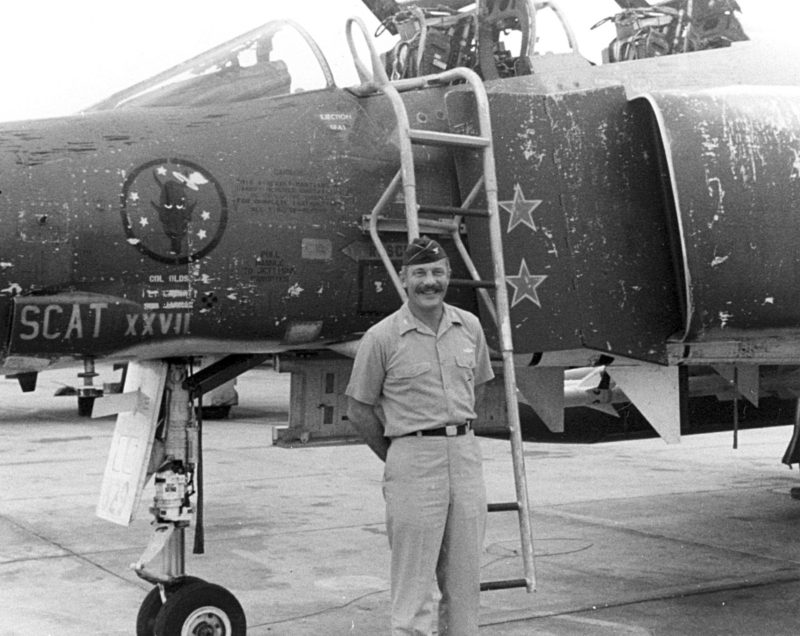
In 1966, Colonel Olds arrived at Ubon Royal Thai Air Force Base to take command of the 8th Tactical Fighter Wing. No sooner had he arrived, the Colonel began to set the tome for his command by flying missions with is men and usually being subordinate to pilots who were under his command. Basicallly forcing them to train him because soon he would be in command of them in combat. Another thing he did was sack the deputy commander of operations, replacing him and bringing another colonel to help train the squadron. To teach Dogfighting, you had to be a Dogfighter and Olds and his new command team were just that.
By late 1967 Olds knew his pilots were ready and had picked a target for them to go after, the Soviet built MiG-21s being operated by North Vietnam. To do this, Olds would have to come up with a plan to lure the Vietnamese pilots and their MiG-21s into the air to engage them.
By late 1967 Olds knew his pilots were ready and had picked a target for them to go after, the Soviet bulit MiG-21s being operated by North Vietnam. To do this, Olds would have to come up with a plan to lure the Vietnamese pilots andd their aircraft into the air to engage them.
The MiG-21 “Fishbed” was during this time, the most advanced fighter to be produced by the Soviet Union. First entering service with the USSR in 1959, the MiG-21 had earned as reputation as being an agile and fast fighter aircraft with a top speed of over 1300 miles per hour. Armed with a 23mm cannon and two K-13 “Atoll” heat seeking missile, the Fishbed was by far the most valuable aircraft North Vietnam had at their disposal. So valuable in fact, they would only send them up to engage the slower F-105 fighter-bomders rather than risk going head to head with the more powerful F-4 Phantom.

In 1967, it was believed that North Vietnam had only 12-16 Fishbeds at the time. If Olds was able to knock some of these aircraft out of the air, it would deal a serious blow to the North. Since these MiGs only came up to attack the F-105s, Olds would have to make his Phantoms look like the Thud. To do this, his aircraft would have to fly at the same speeds, in the same formations and even use the same call signs used by F-105 pilots. But the thing which would totally convince the North radar sights that these were bombers, was the addition of QRC-160 Electronic Countermeasures Pods to each of the aircraft involved.
The QRC-160 was more commonly used on the F-105s so as to prevent SAM sites from gaining radar lock. If the North Vietnamese radar units saw that their systems were being jammed, then they would believe that another flight of Fighter-Bombers were inbound and as a result, scramble the MiG-21s. With all these factors in place, it was now time for the trap to be set.
Early on the morning of January 2nd, 1967, the first flight of 4 F-4 Phantoms took off form Ubon with Robin Olds in the lead. Five minutes later 4 more Phantoms took off and five minutes after that, 4 more Phantoms took off. This was apart of Old’s plan, as he knew that his aircraft would only have minutes above their target before having to return to base. Launching his fighters in 5 minutes intervals made sure that his squadron could maximize their time over the enemy airfield.
Flying into North Vietnam, Olds flight began to mimic the flight pattern of the Thunder Cheifs as they made their way to their target. Which happened to be just outside of Hanoi, the North’s capitol. There was heavy cloud cover over the airfield, which in a way worked in favor for the Phatom pilots. As the MiGs would only be able to see the Americans once they were in the air.
Suddenly, a MiG-21 burst through the clouds and plotted an intercept course, the ruse had worked and the Vietnamese had taken the bait. One could only imagine just what that MiG pilot felt as he came up expecting to find bombers, but was greeted with fighters instead. But he pressed on his attack forcing the Phantoms to do a defensive split in an attempt to throw off the enemy pilot. But the MiG continued to press on and got behind Olds and his wing man.
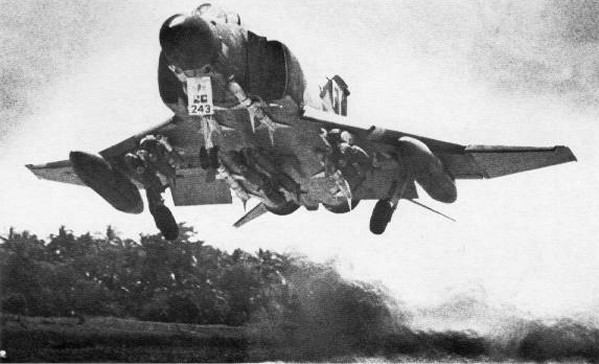
Seeing what was happening, the No. 4 Phantom acted and went into what is known as a “High Yo-Yo”, leveling his wings to pull high up and inverted above and behind the chasing MiG then turning and diving in behind the enemy aircraft, giving him a perfect missile lock. Sliding in to position, N0.4 fires a missile and it was a direct hit. Within the first few minutes of Bolo, one MiG-21 had been shot down but soon more aircraft appeared through the clouds and moved in to engage the Phantoms.
It was not long before Olds spotted another MiG and moved in for what he thought would be an easy kill. The Colonel fired two radar guided Sparrow misssiles, but they failed to gain lock and fail to detonate. Not detered, Olds stayed with the enemy fighter and launched a heat seeking Sidewinder, but the MiG pilot managed to evade that as well was able to make it back to the cloud cover. But as fast as he vanished, another MiG-21 appeared and Olds engaged him via a vector roll. Lining the Phantom up with the new target and in perfect position to fire is other Sidewinder. Squeezing the trigger the missile flew off and found its target, sending the doomed aircraft back to earth in flames.
Within 5 minutes 3 MiG-21s had been destroyed and Olds fighters were now in the process of leaving the combat zone. But by this point the second flight of Phantoms known as Ford Flight, had entered the combat zone and were met with a combination MiGs and SAMs. Fortunately for the Phantoms, the QRC-160 pods were doing their job of jamming the ground based tracking systems and the Surface-to-Air missiles flew harmlessly by the aircraft without exploding. But the MiG pilots still had a lot of fight in them and proceeded to engage the approaching Phantoms.
It was no secret that the North Vietnamese had skilled fighter pilots and over the years had scored numerous victories over their american counterparts. But when it came to the MiG-21, their pilots would normally cut and run rather than face off against the Phantoms. The MiG-21 were, at high altitude, more maneuverable than the Phantoms and more importantly, had a gun. But at low altitudes the F-4 was more than a match for the Fishbed as it carried more missiles than their counterparts, and its powerful engines could keep up with the smaller aircraft. Now these MiG pilots were being forced into a fight against an aircraft they were usually ordered to avoid.
Captain Everett Raspberry flying third in Ford flight will end up with the forth MiG kill that day, as he noticed a MiG attempting to intercept his flight leader. In response to the approaching jet, Ford Three gets between his leader and the MiG-21, said MiG being forced into a high G left turn to avoid a fight. But Raspberry breaks left in pursuit of the enemy fighter and arms his missiles, while executing a vector roll to get behind the MiG and line up for missile lock. In an attempt to escape the enemy Phantom, the MiG pilot made a break for the cloud cover, but for reasons unknown to this day, MiG reversed course. Lining himself up for Raspberry to fire a Sidewinder which found its target.
Ford would have to settle with just one kill to their credit, as they had to exit the combat zone and make way for the third flight of Phantoms known as Rambler. As the third wave entered the fight, they too were met with more surface to air missiles and a sky filled with MiG-21s. Captain John Stone lead Rambler flight and was one of the key masterminds of Bolo, which was proving to be a smashing success so far. No sooner had he entered the combat area, Stone spotted 2 MiGs bursting through the clouds and along with his wing man broke right to intercept the new hostiles.
Lining himself up Stone launched a Sparrow missile, but it fell away. Air to air missiles were still a rather new technology by 1967 and in the tropical climate of Vietnam, the Sparrow suffered major reliability issues. Not detered by this, Stone fired two more missiles, the second one finding its target, marking the fifth kill of the operation.
Stone’s wing man also managed to get behind the second MiG and fired a Sparrow, which found its target and destroyed the opposing aircraft. Rambler 4 flown by Phillip Combies also managed to score a kill of his own, lining up behind another MiG and downing it with a Aim-7. This would be the last kill of the operation, as the remaining aircraft dove towards the cloud cover for safety. Not a single Phantom was lost during the engagement.
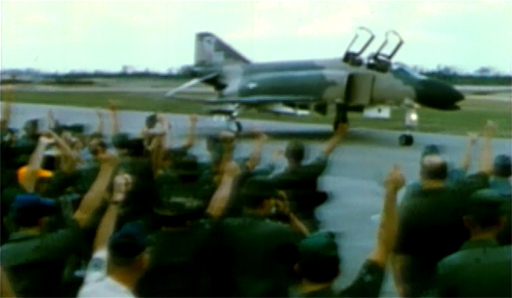
By the end of the day, 7 MiG-21s and 2 North Vietnamese pilots had been lost, effectively cutting the MiG-21 force almost by half. The effects were almost immediate and MiG activity dropped significantly as the North tried to grapple as to what had happen on that fateful day.
Bolo itself earned Colonel Olds a third silver star, as well as lifting flagging moral in the Air Force. Robert Olds would go on to down 3 more enemy aircraft during his stint in Vietnam and with 13 kills already under his belt from World War II, he becomame a triple ace with 17 kills in total.
Ultimately, the 85th TFW would become the top MiG killing squadron of the war with a total of 38 confirmed kills. All thanks to the training and mentality instilled onto them by Robert Olds and his team, who in a way helped the USAF remaster the art of the Dogfight.







